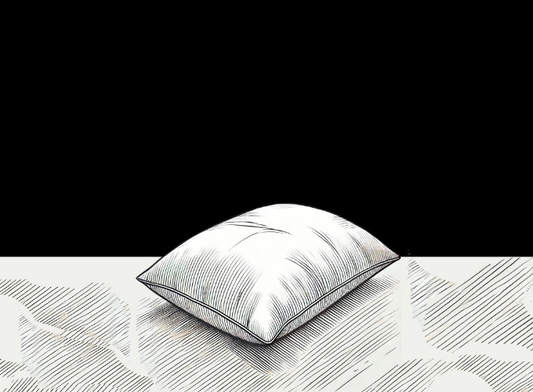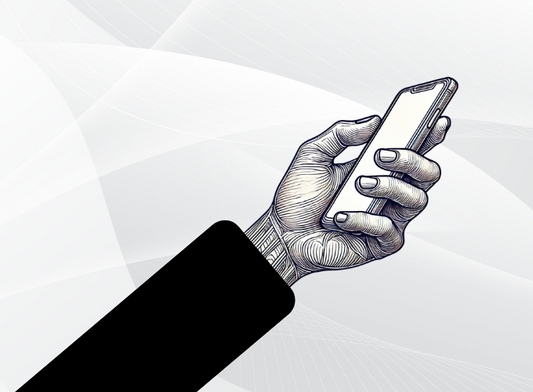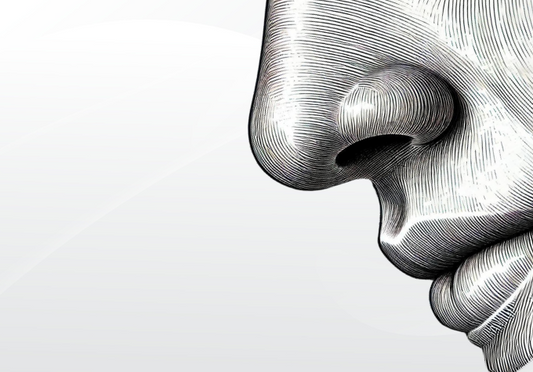A modern world for stronger brains
We all know the basics of staying healthy, both physically and mentally—eat well, sleep enough, and keep active—but what if we told you there's an even more powerful tool? Imagine adding a burst of light to your daily routine and feeling your mind come alive!
This isn't just about keeping up with the latest health trends. Light stimulation is has been recently confirmed as the most innovative, science-backed way to boost brainpower. We're talking about a tool that can elevate your performance and wellbeing.
OId vs new methods to avoiding brain decline
Just like our muscles and hearts need regular exercise to stay in shape, our brains require training to remain sharp and agile. Our brains, complex organs responsible for processing information, storing memories, and managing emotions, play a crucial role in everything we do—from problem-solving at work to building meaningful relationships. As we age, however, our mental abilities can decline, making it more challenging to stay mentally active and engaged. In fact, our cognitive abilities can dip as early as our 30s, reminding us that our brains need more than just the basics to stay sharp.
Imagine you're doing all the right things—getting eight hours of sleep, eating your greens, and hitting the gym. Yet, your focus, organization, or motivation isn’t where you’d like it to be. It's not just you; these are common challenges we all face.
So, we dove into over 300 peer-reviewed studies to uncover the most effective way to enhance cognitive performance. We aimed to explore every possible approach, identifying over 23 different methods, from traditional practices to innovative solutions. Let's take a closer look at a few of these methods.
Traditional Practices
- Sleep: Essential for helping the brain refresh and stay sharp.
- Nutrition: Provides the brain with the necessary nutrients for optimal function.
- Exercise: Increases blood flow, helping the brain stay flexible and quick.
- Meditation: Improves concentration and lowers stress through mindfulness.
- Social Interaction: Engages the brain in complex communication and emotional processing.
- Problem-Solving: Stimulates critical thinking and mental flexibility.
While these methods are crucial for overall well-being and support cognitive function, research indicates that their effectiveness in significantly boosting mental performance is often moderate, with natural methods typically resulting in a maximum of 40% reduction in memory cognition decline as we age.
Innovative Techniques
- Light Stimulation: Uses varying light patterns to improve neural-nervous system activity.
- Vibrational Stimulation: Involves gentle vibrations to enhance nervous system engagement.
- Magnetic Stimulation: Applies magnetic fields to spark brain activity and improve thinking.
- Electrotherapy: Uses tiny electrical pulses to support brain health and performance.
- Neurofeedback: Trains the brain through real-time feedback to improve focus and attention.
- Sound Stimulation: Employs sound waves to synchronize brain activity and boost focus.
These methods have shown promising results in enhancing cognitive functions beyond what traditional practices can achieve. Amidst all these innovations, only one approach truly outshined the rest—light stimulation. Unlike the others, light is exceptional at interacting with the nervous system on a healthy and usable scale, boosting mental clarity, focus, and overall cognitive performance, making it an easy solution for those seeking to elevate their mental sharpness.
When integrated into routine, alongside traditional wellness practices, light stimulation can significantly amplify their effects. Research indicates that light stimulation supports memory and concentration, enhances sleep quality, and boosts cognitive performance. It helps you fall asleep faster, achieve more refreshing sleep, and maintain better focus and energy throughout the day. This method leverages specific light flickering rates to optimize brain activity and cognitive function, making it a particularly effective tool for enhancing mental performance. It's like giving your brain a little boost to keep everything running smoothly.
What was discovered about light?
So, why is light stimulation such a game-changer? The answer lies in a groundbreaking discovery made by MIT researchers in 2016. They found that flickering light at 40 Hz could significantly improve brain health and reduce cognitive decline.
But how does this work? It’s all about brain rhythms and synchronization. Our brains have natural rhythms, much like a well-conducted orchestra, which help coordinate everything from memory to decision-making. As we age, these rhythms can become offbeat, leading to mental decline and affecting how we think, remember, and make decisions.
MIT's discovery showed that flickering light could help restore these rhythms, acting as a conductor to keep everything in harmony. The research revealed that exposure to 40 Hz flickering light could reduce amyloid-beta plaques in the brain, which are associated with cognitive decline. In animal studies, these plaques were reduced by as much as 50% after just one hour of exposure each day for a week.
Light stimulation works its magic by positively interacting with the nervous system, enhancing brain wave synchronization. After the age of 30, this synchronization improves three key aspects:
- Microglia Activation: These tiny, essential brain cells, known as microglia, act like your brain's cleanup crew. They clear out the clutter that builds up over time. When stimulated by light, microglia become more efficient at reducing swelling and keeping neural pathways clear. This helps ensure that the connections between neurons remain solid and effective.
- Neural Activity Regulation: It controls inhibitory interneurons, which act like brakes for neurons, coordinating and strengthening the connections between neurons.
- Synaptic Connections: Light stimulation helps maintain the strength of synaptic connections, the bridges that allow neurons to communicate. By reinforcing these connections, light stimulation ensures that your brain's communication system remains robust and efficient.
MIT's discovery is the beginning of understanding how light stimulation can transform brain health. The science behind it might sound complex, but at its core, it's all about creating harmony within the brain. So, what does this mean for you?
How light impacts the brain directly
The benefits of light stimulation are unparalleled. Studies indicate that regular exposure to varying light frequencies can lead to a 76% reduction in memory decline and a 69% reduction in brain volume loss. Cognitive function can also be boosted by 18%, making a noticeable difference in your overall brain performance.
Light stimulation can be a game-changer for those juggling multiple responsibilities and feeling overwhelmed. Whether it's navigating the demands of work, family, or personal wellness routines, this method can help you feel more in control and less overwhelmed. The 76% reduction in memory decline means you’re more likely to remember important details, manage your daily tasks effectively, and maintain control. If you’re feeling isolated or stressed, the improved cognitive function can help you stay focused and organized, easing the burden of responsibilities. For individuals struggling with focus and productivity, the 18% boost in cognitive function can enhance concentration and decision-making. For those dealing with mental health challenges, light stimulation's ability to reduce brain volume loss by 69% provides a supportive tool for maintaining long-term cognitive health. This approach offers relief from mental strain, helps manage symptoms associated with mental health challenges, and promotes a clearer, more balanced state of mind, supporting overall well-being and making it easier to achieve your goals.
Sound strengthens light effectiveness
Now that we’ve seen what light alone can do to your brain health, imagine what happens when you add sound into the mix. Studies have shown that sound stimulation can help combat cognitive decline by boosting memory recall by an average of 26% overnight, highlighting its potential to support mental sharpness as we age. When you pair this with the effects of light, the combination becomes a powerful duo for enhancing cognition and memory. Imagine being at a concert where the music and lights sync perfectly, creating an unforgettable experience. That’s what light and sound stimulation can do for your brain! Different sounds stimulate various brain areas, helping improve neural communication and overall brain health. When combined with light, this synchronization of brainwaves amplifies the benefits, making it easier to maintain focus and stay alert throughout the day.
Looking Forward: The Light Revolution
As we’ve seen, light and sound stimulation offers a powerful boost to sleep, focus, and relaxation, helping you manage busy schedules and enhance self-improvement. By stimulating your brain's natural rhythms, light and sound improve concentration and productivity, making staying engaged and energized throughout the day easier.
Next week, we'll explore how light stimulation can enhance sleep by reducing the time it takes to fall asleep, improving sleep quality, and extending restful sleep. We'll explain exactly how light affects these aspects and what the results mean for your well-being. Stay tuned for insights into how light stimulation can help you achieve more restorative sleep and guidance on how to use it effectively.





